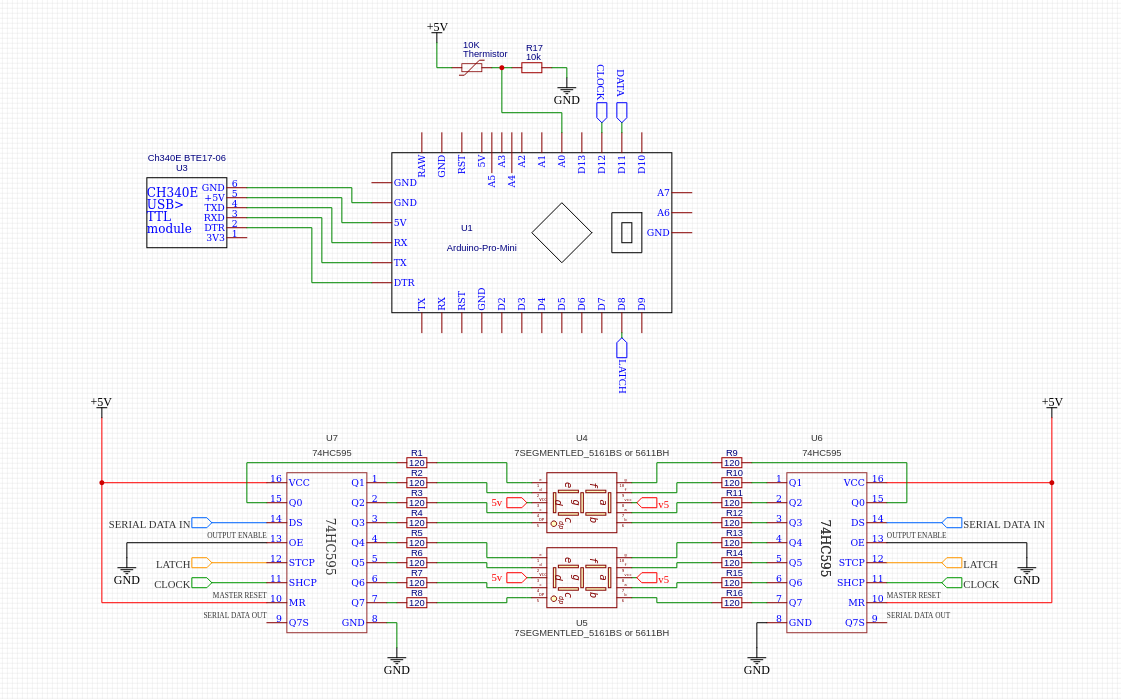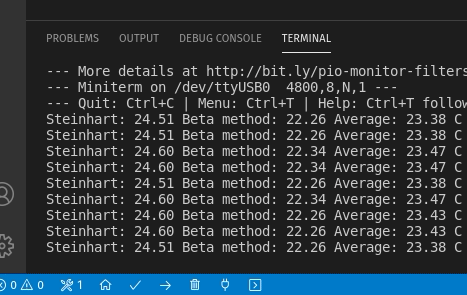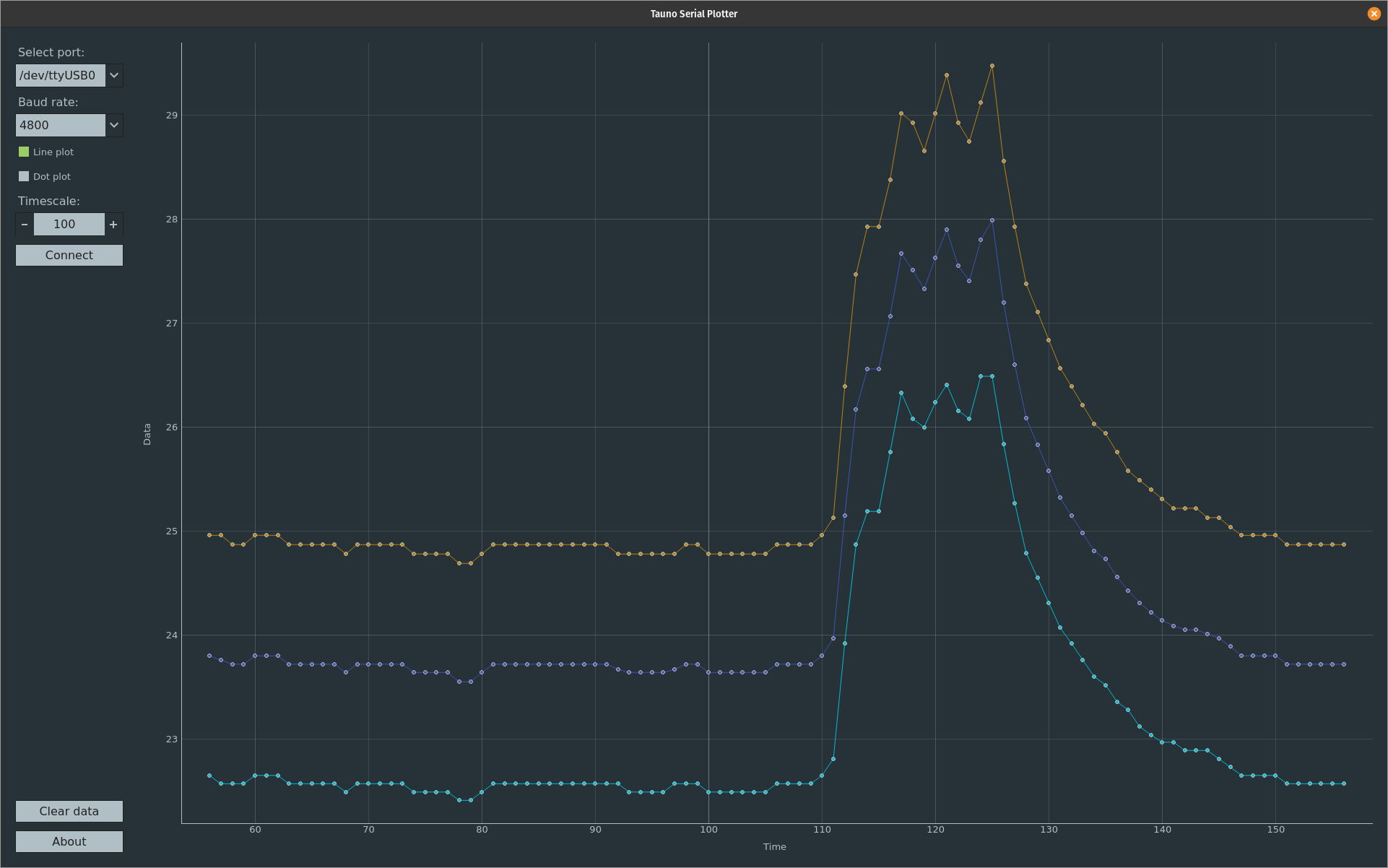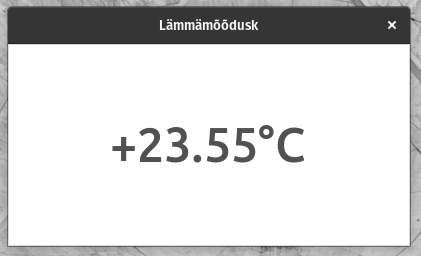
The simplest way to read serial data is to use Miniterm:

I have made one Serial Plotter to plot data:
Code And simple Python GUI:
And simple Python GUI:
 Code on Github.
Code on Github.A device that measures the ambient temperature in the environment in which it is located. And displays it on the screen.
Since the two methods give you readings a couple degrees C apart, it's not clear that simply averaging them will give a better number than either one alone (which one??).
For a limited range (around room temperature), if you want accurate readings, why not forget about Steinhart-Hart or Beta and just calibrate the thing for the actual sensors you are using?